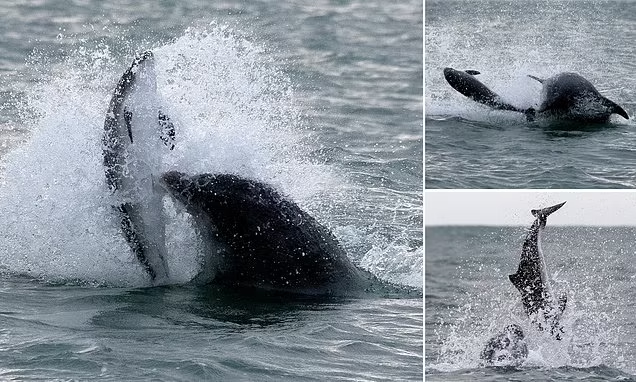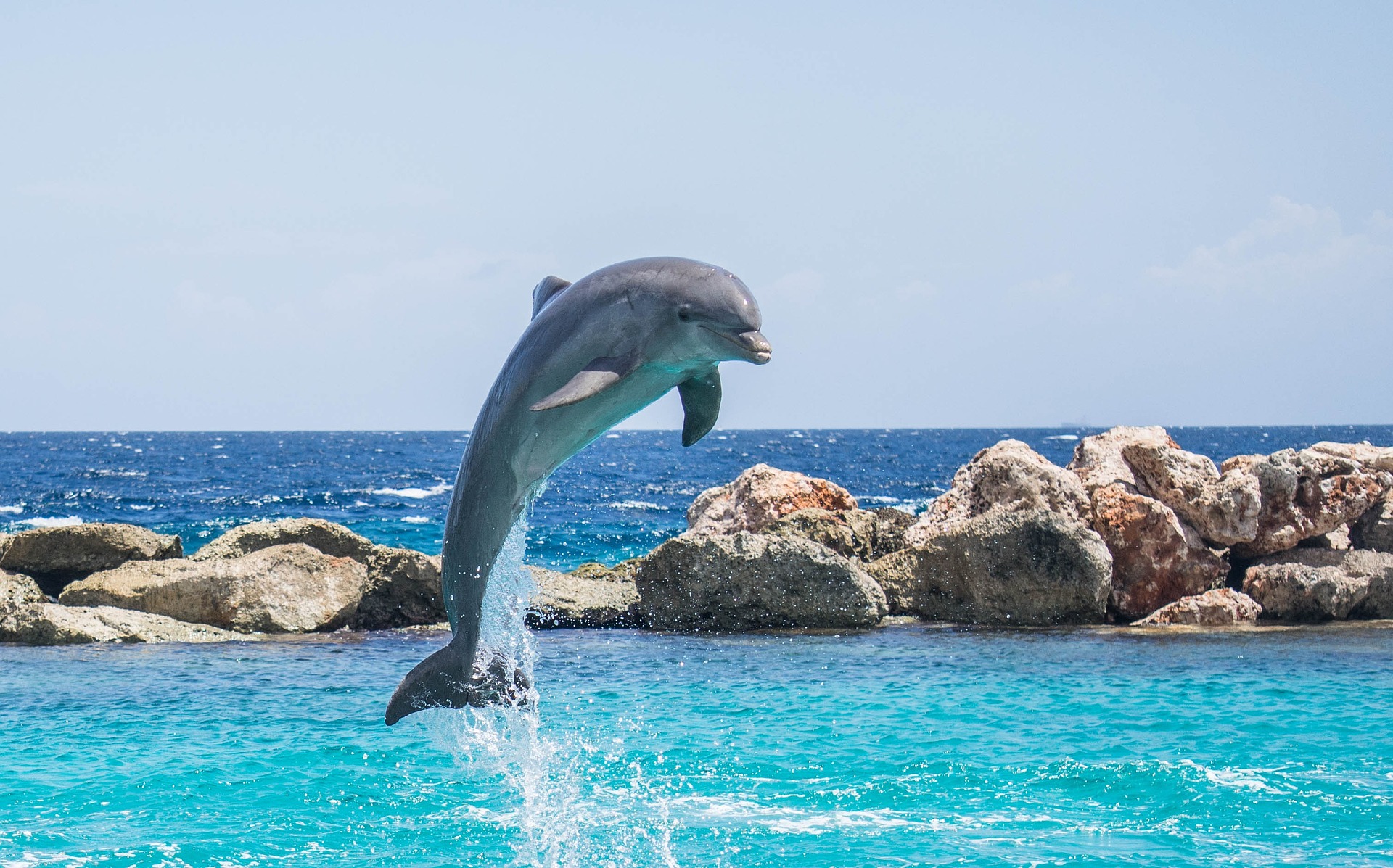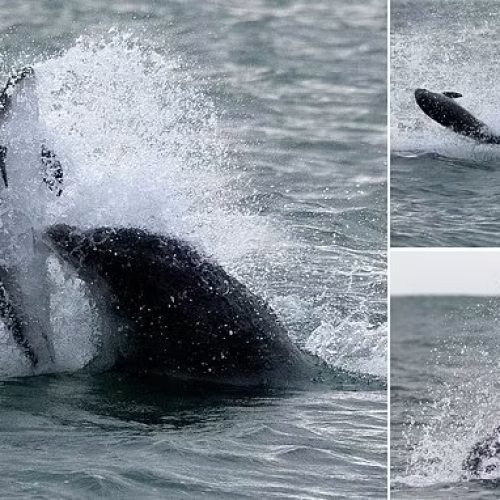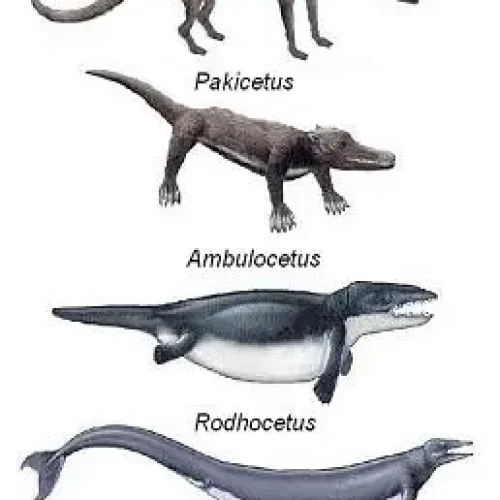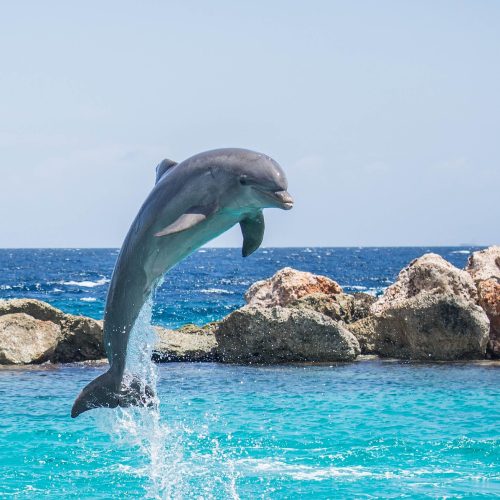In this article
DEMYSTIFYING DOLPHIN BEHAVIOR: AGGRESSION IN CETACEANS
Dolphins, often portrayed as playful and friendly creatures, have captivated our imagination for centuries.
However, beneath their charming exterior lies a complex social structure and behavioral patterns that might surprise many.
The friendly facade: understanding dolphin behavior
Dolphins are renowned for their intelligence and seemingly friendly demeanor.
Their curved “smiles” and acrobatic displays have made them stars of marine parks and popular subjects in wildlife documentaries. Yet, this perception only scratches the surface of dolphin behavior.
In the wild, dolphins exhibit a wide range of behaviors, from cooperative hunting to intricate social interactions.
However, like many intelligent species, dolphins also display complex emotional responses, including aggression.
Understanding this aspect of their behavior is crucial for marine biologists, conservationists, and anyone interacting with these cetaceans.

Types of aggressive behavior observed in dolphins
Dolphin aggression manifests in various forms, ranging from mild displays to potentially harmful actions. Some common aggressive behaviors include:
• Jaw clapping: A loud, threatening sound produced by rapidly opening and closing the mouth
• Tail slapping: Forcefully hitting the water surface with their flukes
• Charging: Rapidly swimming towards another dolphin or object
• Biting: Using their teeth to inflict injury on other dolphins or even humans
A study published in the Journal of Mammalogy reported that bottlenose dolphins in Shark Bay, Western Australia, engaged in aggressive behaviors towards each other in about 11.8% of observed interactions.
Factors triggering dolphin aggression: from territorial disputes to mating conflicts
Several factors can trigger aggressive behavior in dolphins:
1. Territorial disputes: Like many animals, dolphins can be fiercely protective of their hunting grounds. A research team from the University of Aberdeen observed increased aggression among bottlenose dolphins when competing for prime fishing spots in the Moray Firth, Scotland.
2. Mating conflicts: Male dolphins often engage in aggressive behaviors during mating season. They may form alliances to compete for females or directly confront rivals.
3. Protection of young: Female dolphins, particularly mothers, can become aggressive when perceiving threats to their calves.
4. Resource competition: In areas where food is scarce, dolphins may display aggression towards competitors, including other dolphin species or even humans.
5. Stress from human activities: Increased boat traffic, pollution, and habitat destruction can lead to heightened stress levels in dolphins, potentially resulting in aggressive responses.
It’s important to note that while dolphin aggression exists, it’s not typically directed at humans.
The International Shark Attack File, maintained by the Florida Museum of Natural History, recorded only 13 alleged “attacks” by dolphins on humans between 1934 and 2022. In contrast, the same period saw over 6,500 unprovoked shark attacks worldwide.
Understanding dolphin behavior in its entirety helps us appreciate these animals for what they truly are: complex, intelligent creatures navigating their marine environment.
This knowledge is crucial for developing effective conservation strategies and promoting responsible dolphin-watching practices.
DOLPHIN VS SHARK ENCOUNTERS: UNVEILING THE TRUTH ABOUT AQUATIC RISKS
Beneath the waves, two iconic marine creatures capture our imagination and, at times, our fear: dolphins and sharks.
While sharks often bear the brunt of our aquatic anxieties, recent data suggests we might be overlooking a surprising contender in the realm of marine encounters.
Crunching the numbers: attack incidents revealed
Contrary to popular belief, dolphin-human incidents occur more frequently than many realise. In 2023, the French Maritime Safety Authority reported 37 dolphin-related incidents along the country’s coastlines, compared to just 12 shark encounters.
This stark contrast challenges our preconceptions about marine risks.
However, it’s crucial to interpret these figures with nuance. The severity and nature of these incidents vary significantly between species.
Decoding dolphin behavior: playful or perilous?
Dolphins, often perceived as friendly and intelligent, can display complex behaviours towards humans. Marine biologist Dr. Claire Dupont of the Océanopolis aquarium in Brest explains:
“Most dolphin-human interactions are benign or even positive. However, we’ve observed instances of aggressive behaviour, particularly from solitary or overly habituated individuals.”
Key points to consider:
• Intentional contact: Some dolphins actively seek human interaction, which can lead to accidental injuries.
• Territorial disputes: Male dolphins may perceive swimmers as rivals during mating seasons.
• Misinterpreted play: A dolphin’s idea of ‘play’ can be rough for humans, resulting in unintended harm.
The case of “Jean-Floc’h,” a solitary bottlenose dolphin off the coast of Brittany, exemplifies this complexity. While beloved by locals, his boisterous behaviour led to several minor injuries among swimmers in 2022.
Shark encounters: separating myth from reality
Despite their fearsome reputation, shark attacks remain relatively rare. The International Shark Attack File recorded just 57 unprovoked shark bites worldwide in 2022, with only five fatalities.
Factors influencing shark encounters:
• Species: Not all sharks pose equal risk. The great white, tiger, and bull sharks account for most serious incidents.
• Location: Certain areas, like Réunion Island, have higher concentrations of potentially dangerous species.
• Human activity: Surfing and spearfishing in shark-rich waters increase the likelihood of encounters.
While both dolphin and shark encounters warrant respect and caution, it’s essential to view the risks in context.
Understanding marine life behaviour, adhering to local guidelines, and practicing water safety remain the best ways to enjoy our oceans responsibly.
STAYING SAFE: INTERACTING WITH MARINE WILDLIFE
Dolphins captivate our imagination with their playful nature and intelligence. However, as marine tourism grows, so does the need for responsible interactions.
Best practices for dolphin watching
When observing dolphins in their natural habitat, follow these expert-recommended guidelines:
• Maintain a distance of at least 50 meters from dolphin pods
• Never feed wild dolphins – it disrupts their natural behaviors
• Limit viewing time to 30 minutes per group
• Approach slowly and parallel to their direction of travel
• Avoid sudden movements or loud noises
These practices allow for memorable experiences while prioritizing the well-being of marine life.
Decoding dolphin behavior: when to keep your distance
Understanding dolphin body language is crucial for safe interactions. Watch for these warning signs:
• Tail slapping the water surface
• Abrupt changes in swimming direction
• Rapid diving or submerging
• Loud vocalizations or “whistles”
Education plays a vital role in protecting dolphins and their habitats.
Initiatives like beach clean-ups organized by Surfrider Foundation Europe demonstrate the direct impact of human actions on marine life.
Sustainable tourism: supporting dolphin-friendly practices
Choose eco-certified operators for your marine adventures.
The High Quality Whale-Watching (HQWW) label, recognized by ACCOBAMS (Agreement on the Conservation of Cetaceans of the Black Sea, Mediterranean Sea and Contiguous Atlantic Area), ensures operators follow strict guidelines for responsible wildlife viewing.
By supporting these businesses, you contribute to conservation efforts and set an example for sustainable tourism.
The Whale and Dolphin Conservation Society reports that eco-certified operators in France have seen a 15% increase in bookings over the past two years, highlighting growing consumer awareness.

